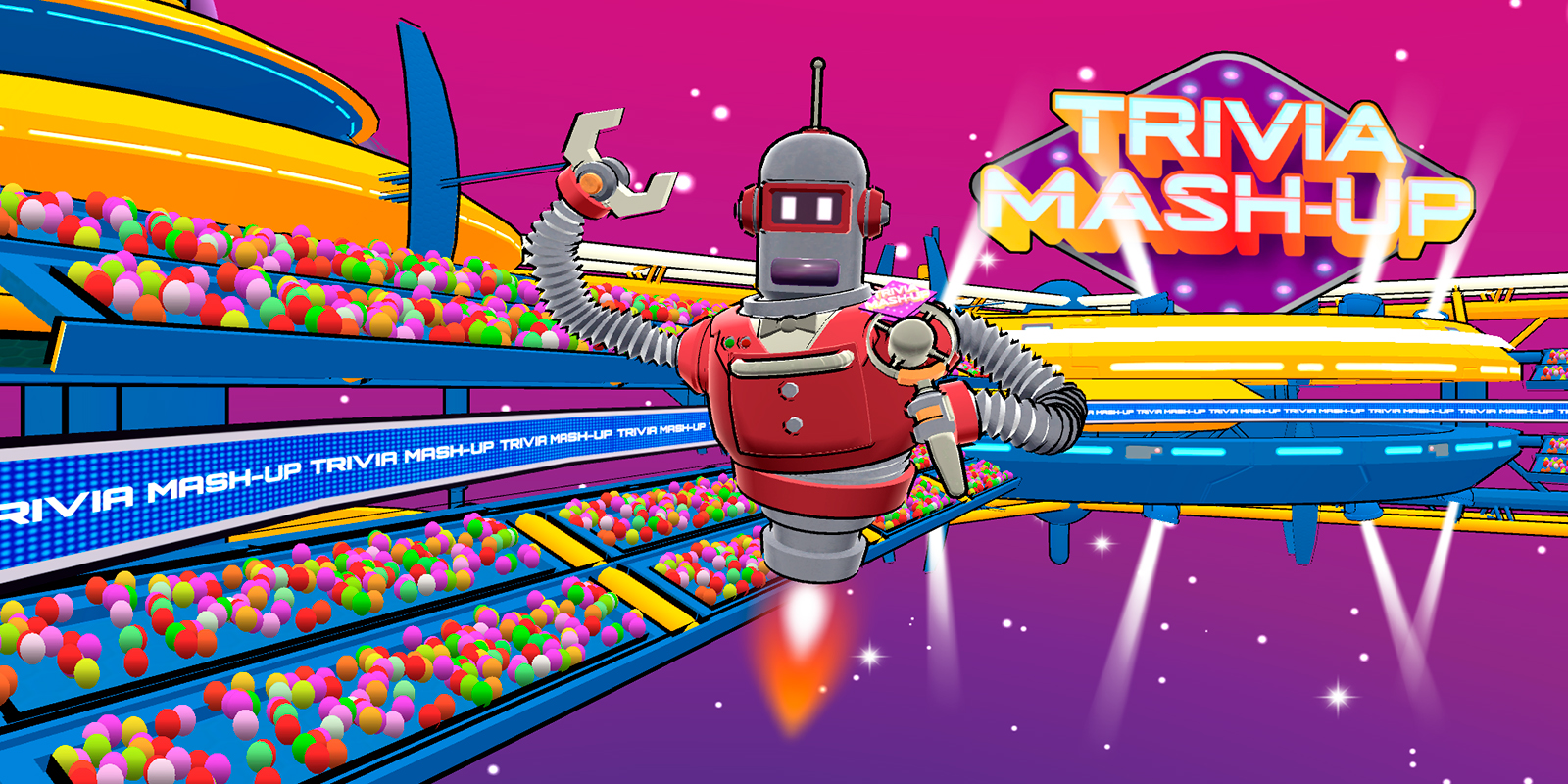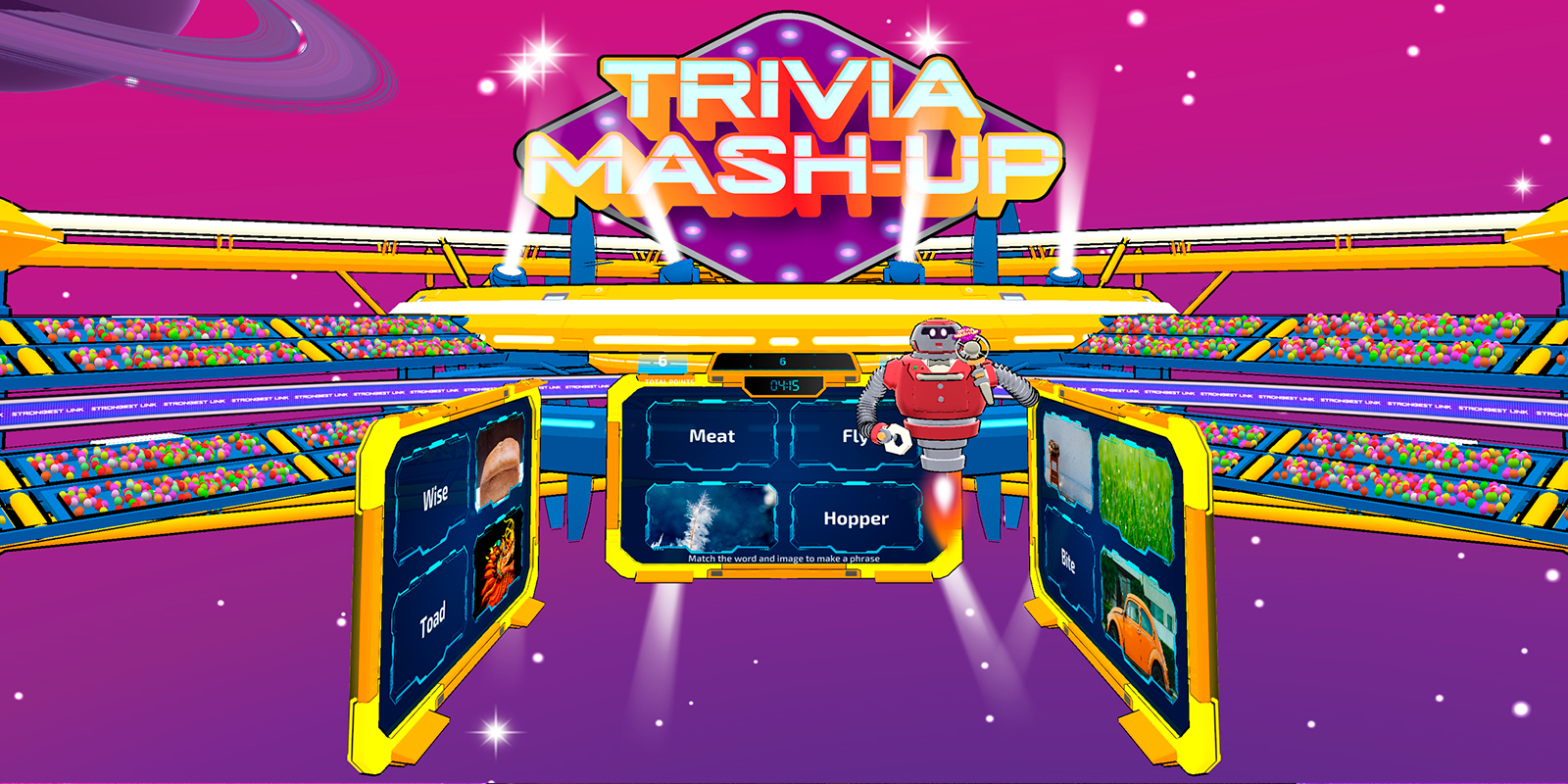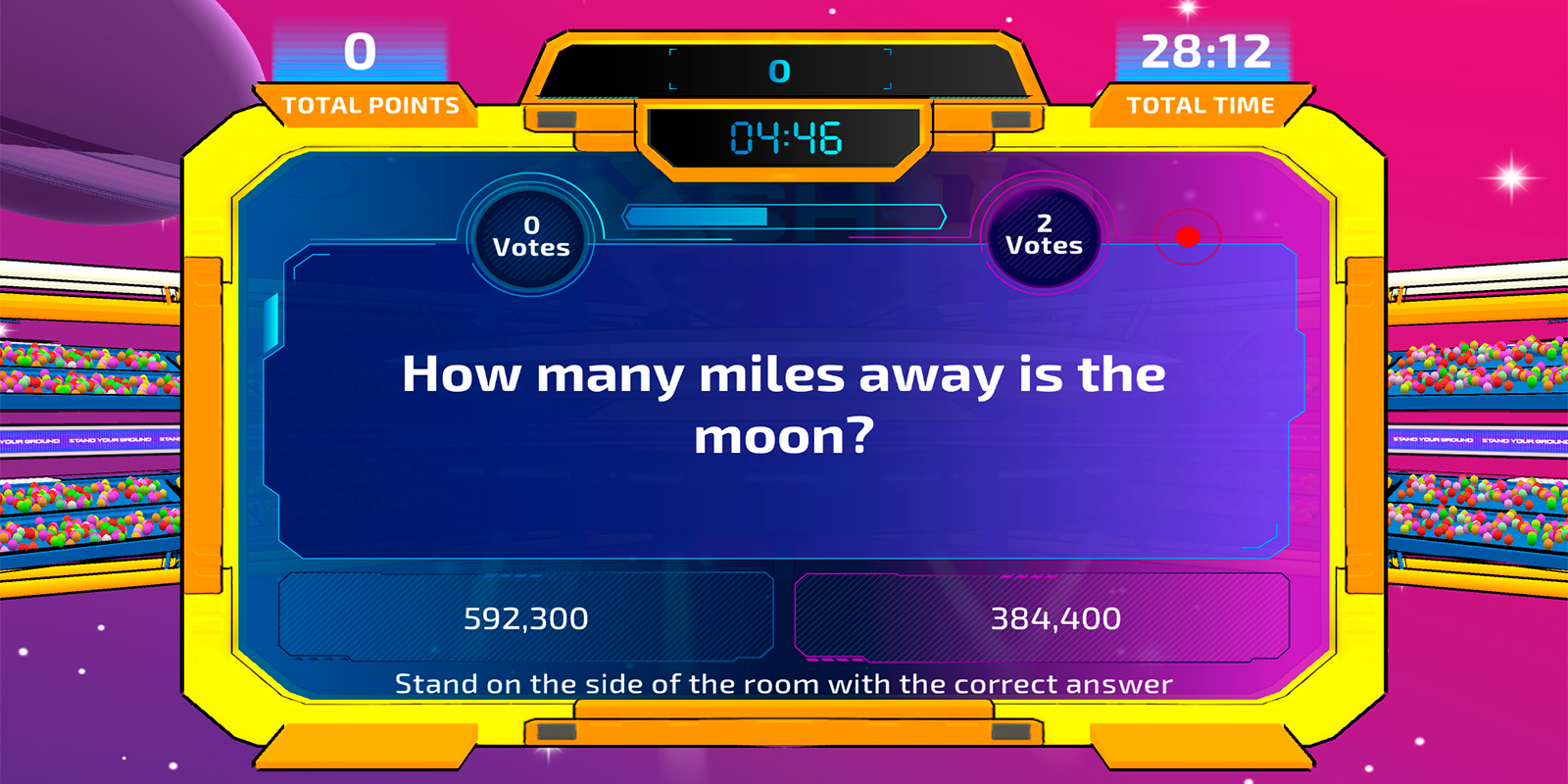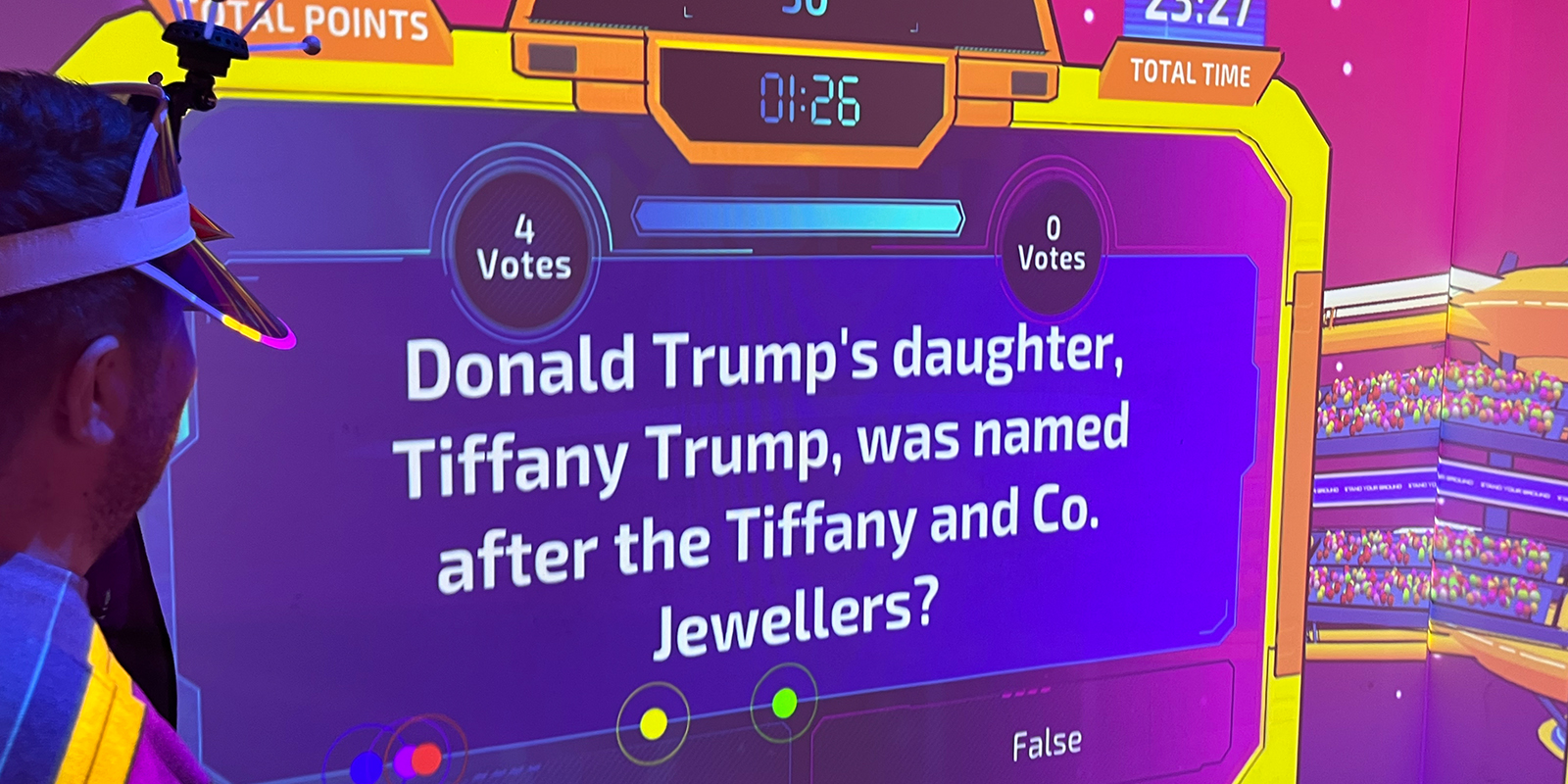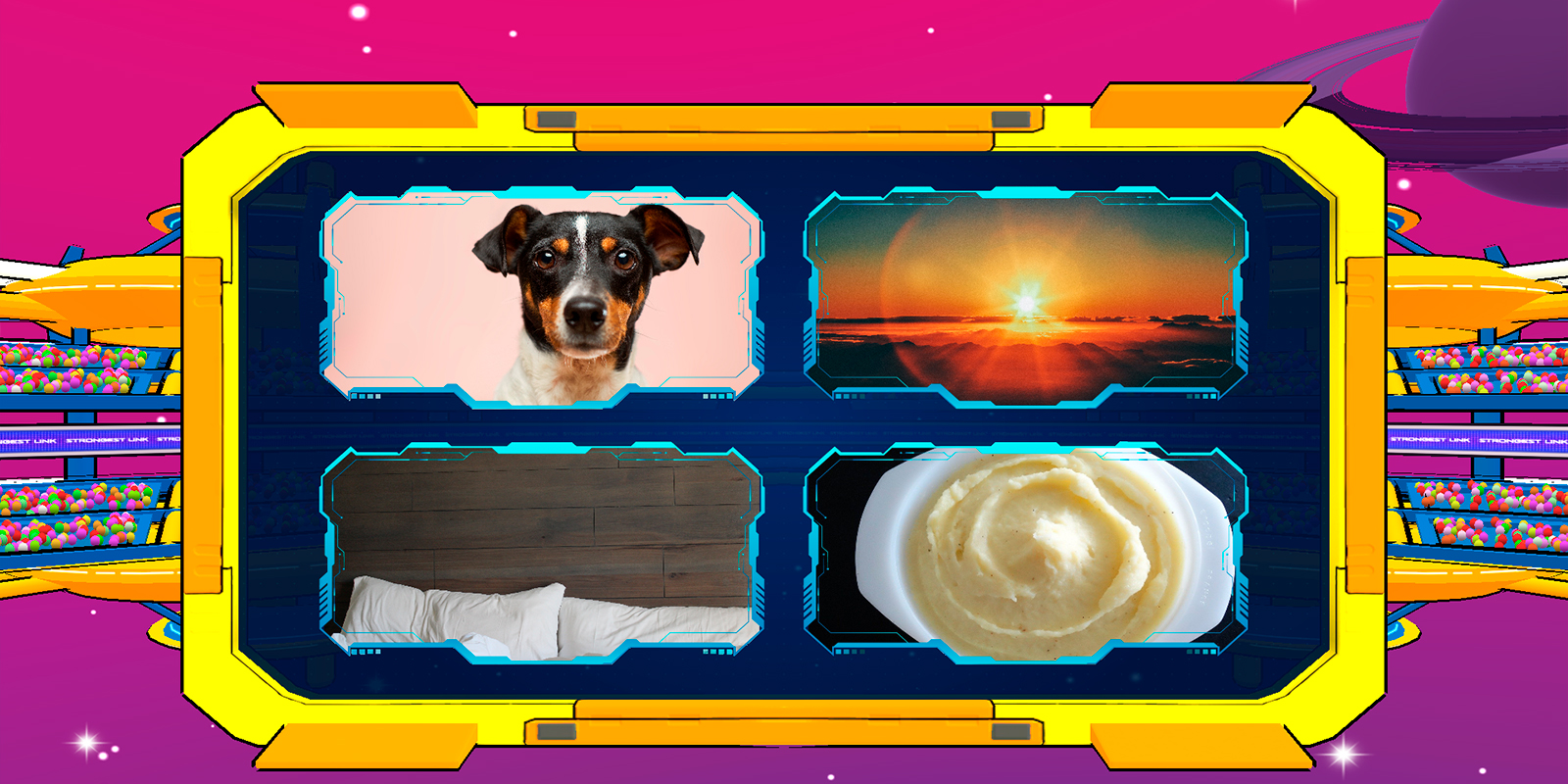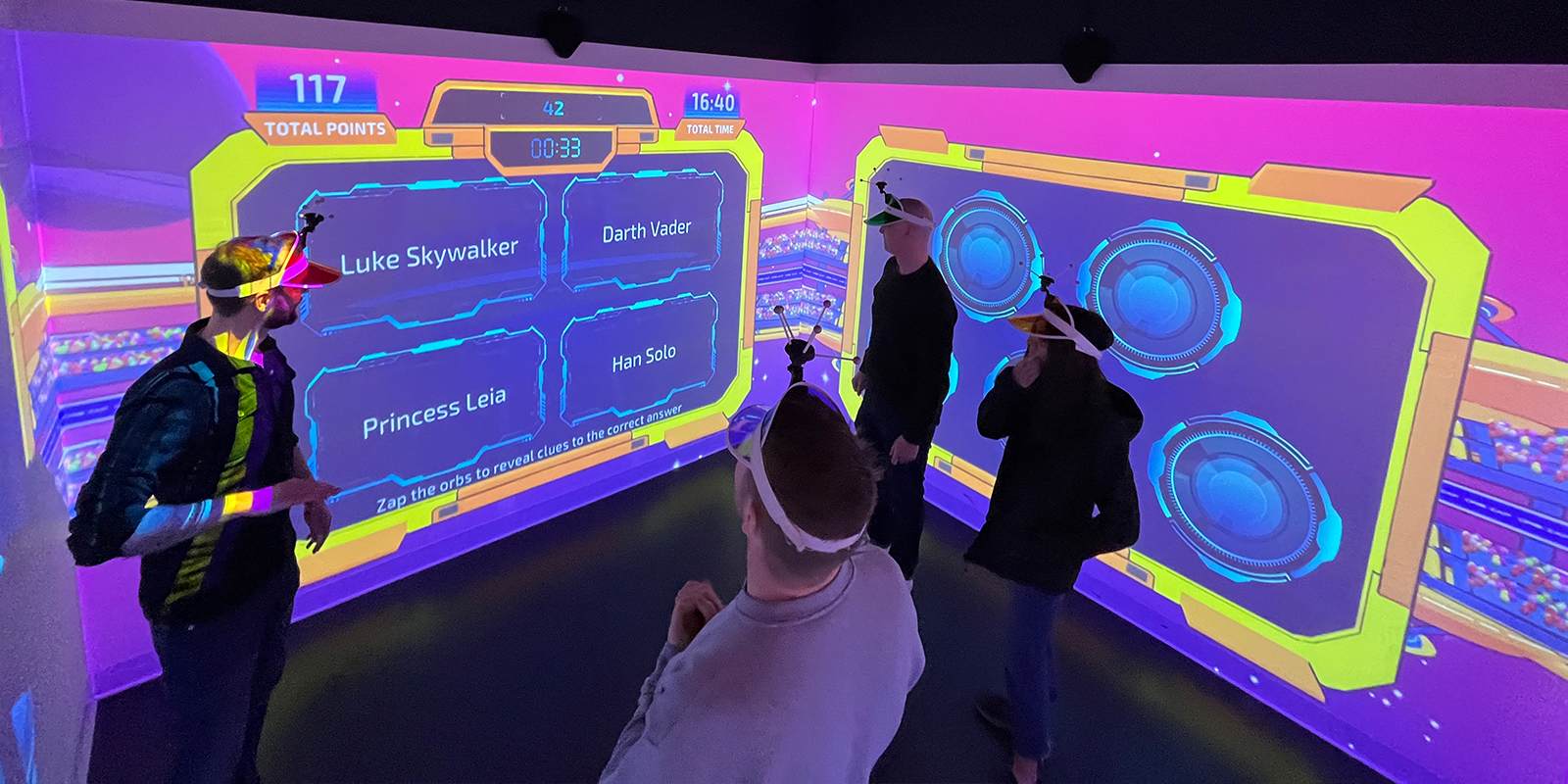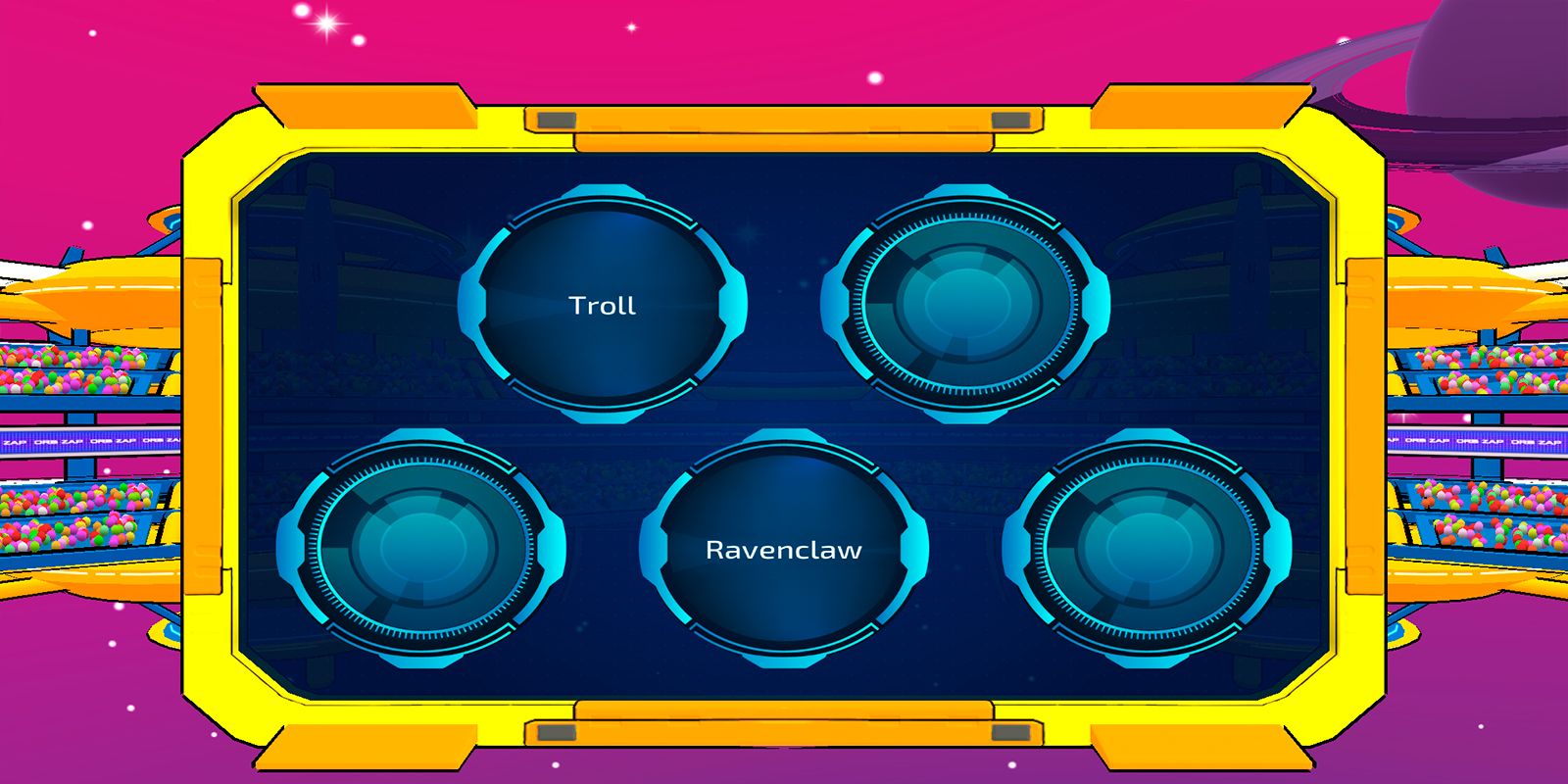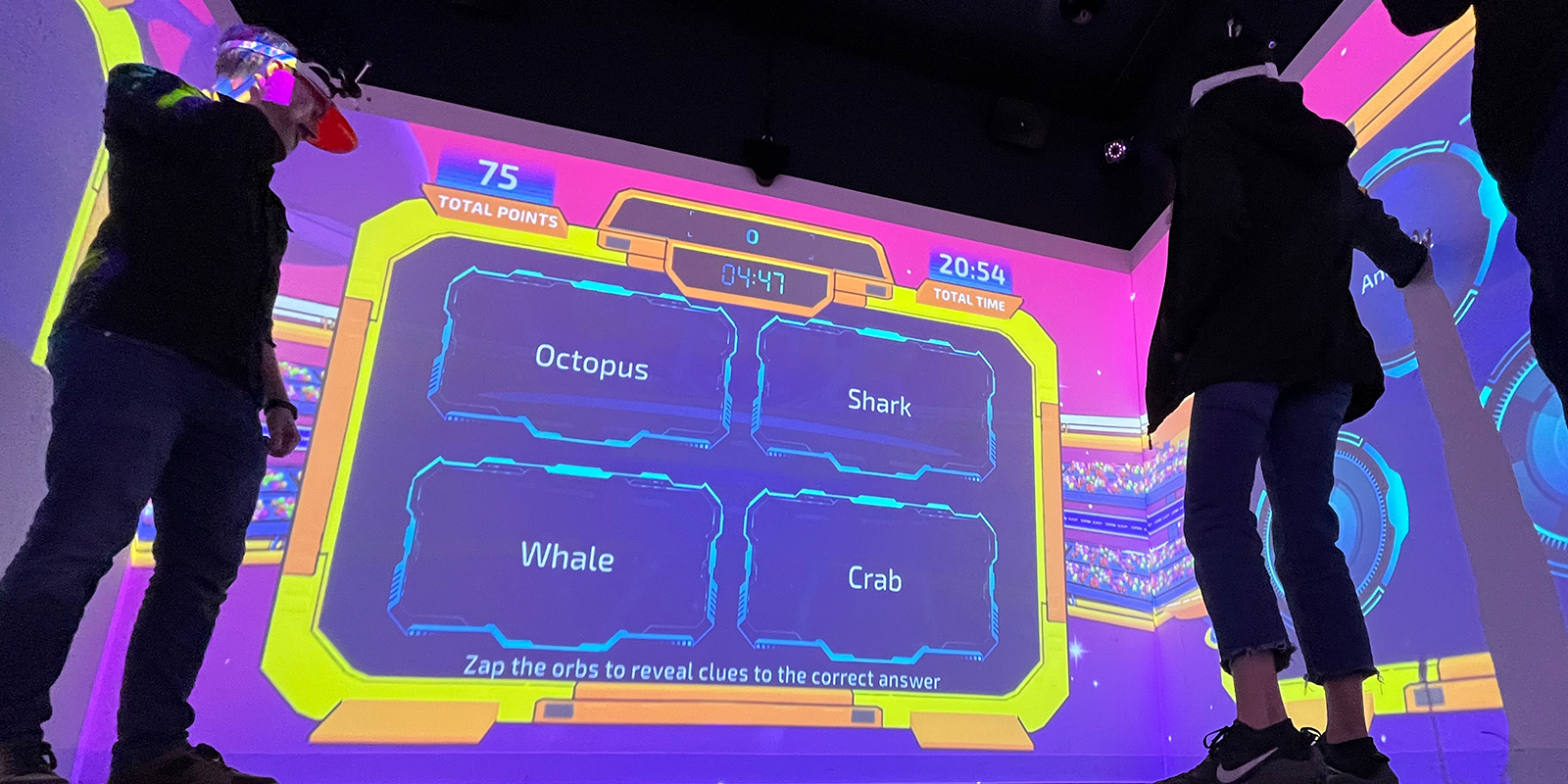Corporation Pop has pushed the boundaries of immersive gaming to the next level. We have done so by designing and building a game show in outer space bringing players to the centre of the action.
Electric Gamebox is a group gaming experience which takes place in a private, digital room, or Gamebox. Projection mapping, touch screens, motion tracking and surround sound put users at the heart of a hyper-immersive adventure. Players are presented with a range of games to choose from. They might find themselves searching for rare Martian minerals, playing Aardman’s Championsheeps with Shaun The Sheep, or saving the Queen’s corgis.
Players’ every move around the Gamebox is tracked. High-Tech headgear with an inbuilt tracking device lets the Gamebox know where each person is at all times. If they’re at the front, to the left, crouching down or jumping up, the tech knows it. Games use this technology to challenge players in new ways and stretch the boundaries of competition.
The team at Electric Gamebox has reinvented the video game, and they chose us to work with them on their latest offering — Trivia Mash-up.
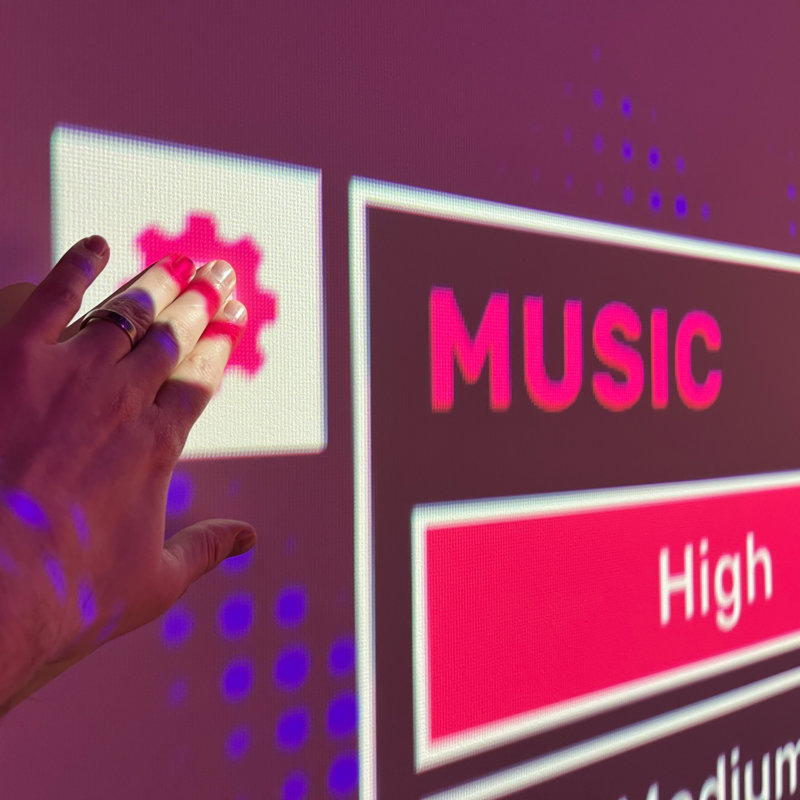
Projected UI button interaction
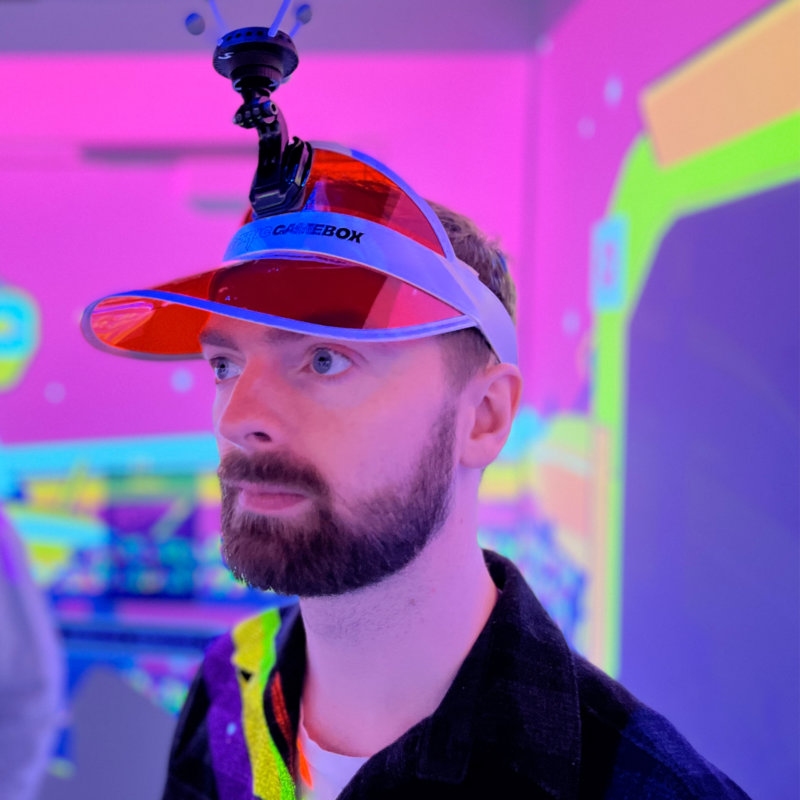
Unique headset tracking hardware
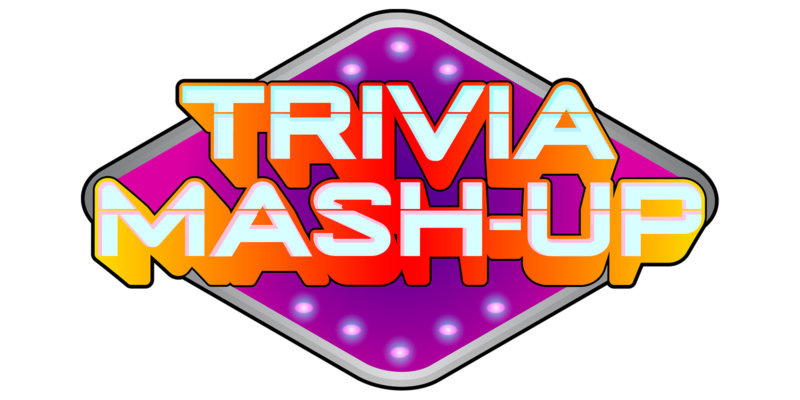
Game branding logo
Challenge: keeping players engaged in an immersive environment
Our brief was to design and develop a 30 minute quiz game for teams, with a digital host. It had to be seasonally adaptable with the option to refresh regularly with new content. The client wanted the option to give the host a witch’s hat for Halloween or re-skin the game with a sprinkling of snow at Christmas.
In addition, the guys at Electric Gamebox asked for an intro video and music to accompany it. Beyond that, we could let our creativity flow, so we did.
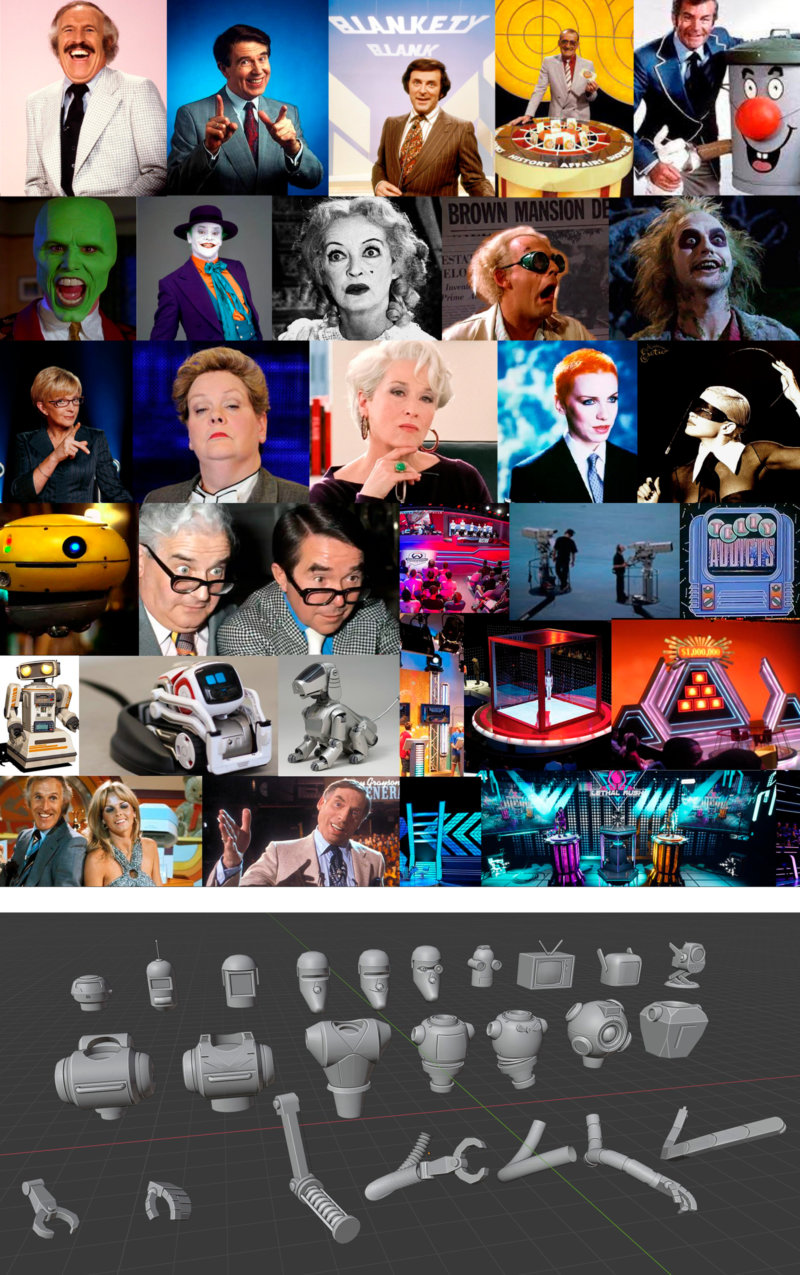
Mood board examples & initial block out presenter work in progress
Response: variety is the name of the game
Move over Bruce Forsyth, Corporation Pop is in town! From the outset, Trivia Mash-up was going to look wild. We located the games in outer space and decided upon a robot quiz master to guide players through.
Our mood boards took the best (and the worst) of TV hosts and characters and mashed it all together. Pushing the boundaries of the concept, we landed on a multi-personality presenter whose head switched between male and female characters. Some say Bernie Brainbox and Brenda Brightspark have elements of Brucie and Anne Robinson — we couldn’t possibly say…
We based the arena on the Colosseum in Rome and populated it with thousands of spectators. Its three-dimensional aspect made it feel huge and gave a genuine sense of scale in the Gamebox. The brief even extended to naming the game and devising a brand for the experience.
The Games
Not happy with a standard quiz show, we included four games, each developed with the client. They all had a different game mechanic and were visually distinct from one another. Stand Your Ground had players dashing around the Gamebox to stand where the correct answer to a question was displayed. Orb Zap challenged players to guess the right answer based on clues hidden behind orbs they would burst. The Strongest Link revealed banks of images and words, then players had to choose the ones that formed pairs. And Question Flip disclosed an answer for which players had to choose the correct question. Sounds simple? You should give them a go!
Corporation Pop researched and wrote the questions and answers, ensuring everything would translate well for an American audience. Then to add tension, the games were all set against the clock, and players could work as a team but were all marked individually. Finally, when it came to scoring, we added a dash of jeopardy by giving players the opportunity to gamble points.
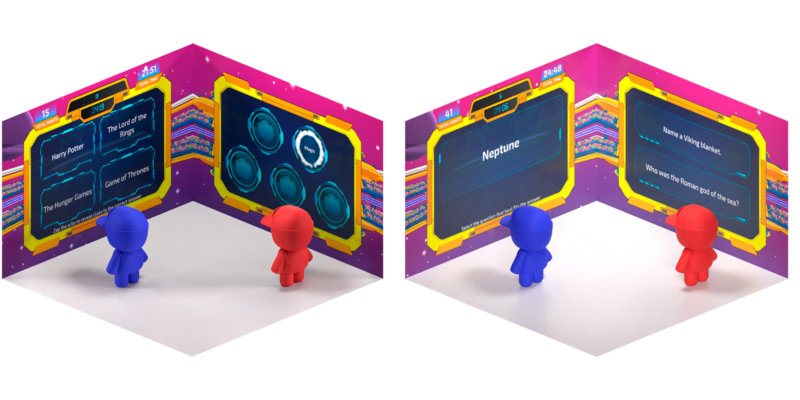

Projector & tracking animation
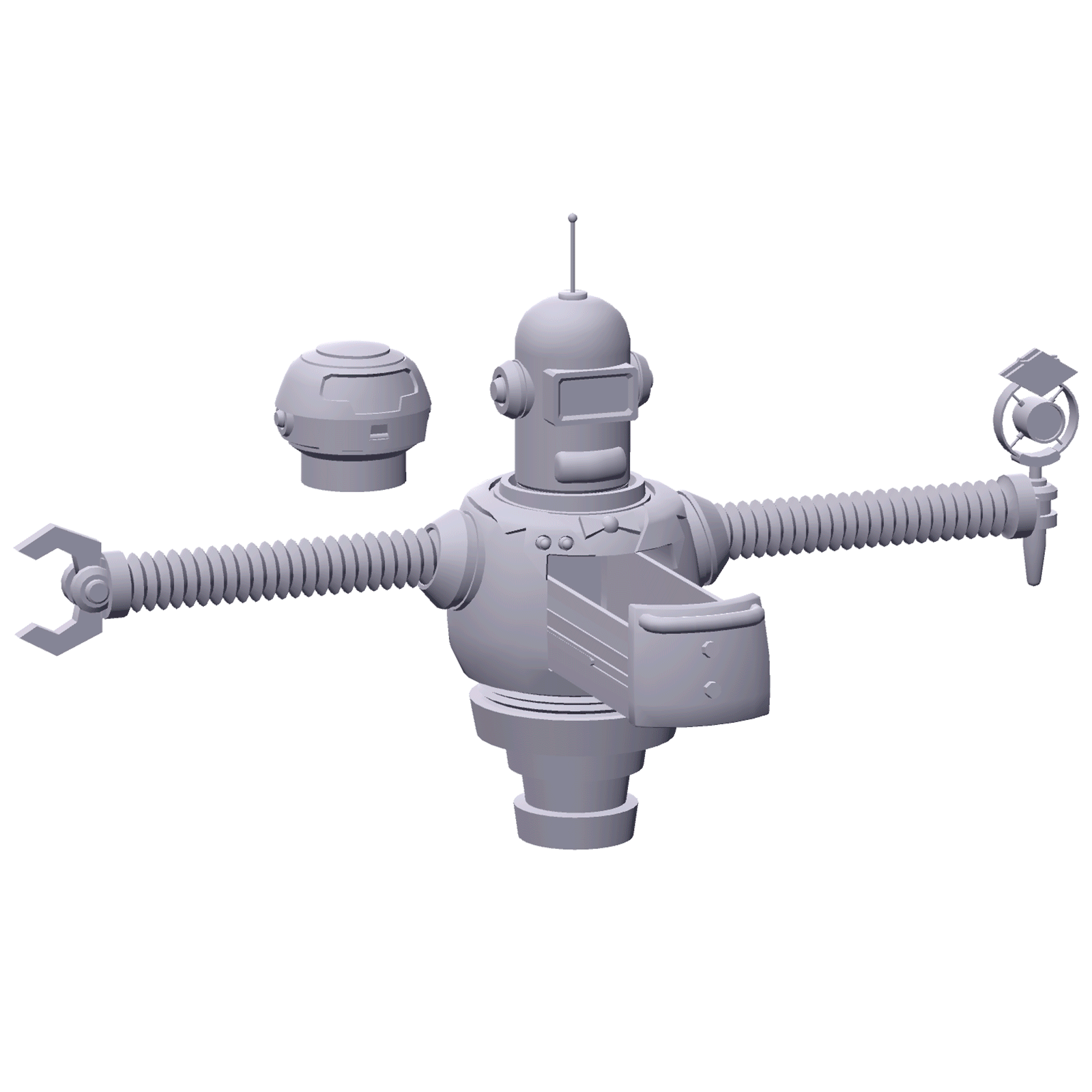
Initial block out & final texturing of presenter
Challenge: working in a unique game space, with limited access
At Corporation Pop, we have a well practised, streamlined development process. We consider the native environment of products when designing User Experience (UX) and test on-device as we’re developing. It might be a mobile app for on the go, VR for the classroom, or a website used by festival-goers. And of course we have a range of devices we call on, including iPads, Android phones, laptops and headsets. Whatever the case, we can usually do it from our desks.
Unfortunately, there was no way of fitting a three metre Gamebox in our studio, which meant on-site testing.
Response: comms, flexibility and ninja skills
Handily, we’re not more than a ten-minute walk from the nearest Electric Gamebox. But it’s a business, and they have players in there constantly, so we had to plan.
Our expeditions to the Electric Gamebox became ultra-organised, detailed reconnaissance missions. We were in regular contact with both the local team in Manchester and their head office in London. We planned precisely what we needed to get out of our visit and how long we would be there for.
It was important to minimise risk when creating features, as there was little room for trial and error. So, we had to know our stuff inside out before we implemented it. Then, with a fixed window of opportunity, we tested features and evaluated the translation of artwork to a 3D environment. We were in and out like ninjas, using every second to understand what it felt like for players.
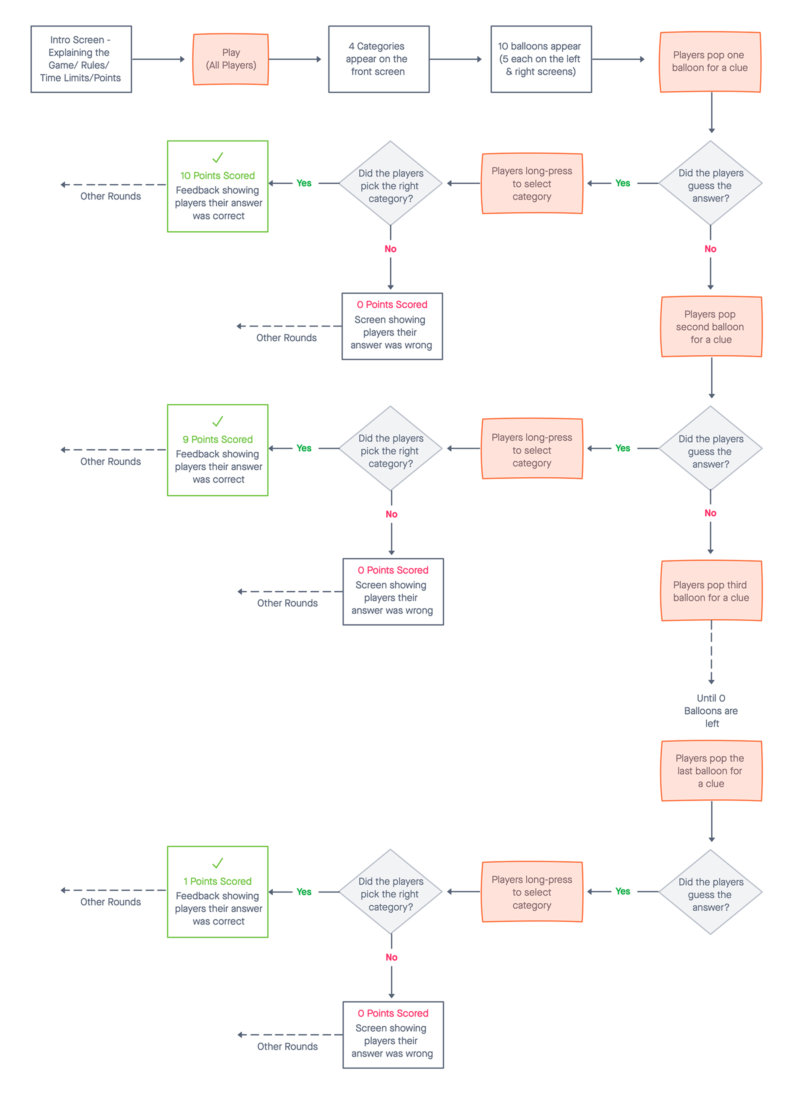
'Orb Zap' user-flow schematic

'Question Flip' timeline schematic
Challenge: stretching the limits of the SDK
We’re ambitious folk at Corporation Pop, so naturally we stretched the limits of the client’s software development kit. Innovative tech powers the Electric Gamebox and leverages its abilities through a complex, bespoke software development kit (SDK). We quickly got up to speed and demonstrated an initial proof of concept to the client. But that wasn’t enough for our determined lot.
Prior to our relationship with the client, everything on the walls of the Gamebox was two dimensional. We figured the best way to make the experience more immersive was to go up a notch to 3D. And so we cracked open our Unity box of tricks and turned it up to eleven.
Response: communication and pushing boundaries
A thorough understanding of how the SDK worked meant we knew how to push boundaries — and boy, did we? The SDK simply wasn’t designed for a Unity 3D rig. So, we worked incredibly closely with the client’s tech team to get the most out of it. Daily meetings ensured a comprehensive knowledge and where we saw an unexploited opportunity, we took it. With no direct access to live debugging systems, we quickly adopted development best practises between us to ensure code was resilient and everything went smoothly.

Full Experience timeline schematic
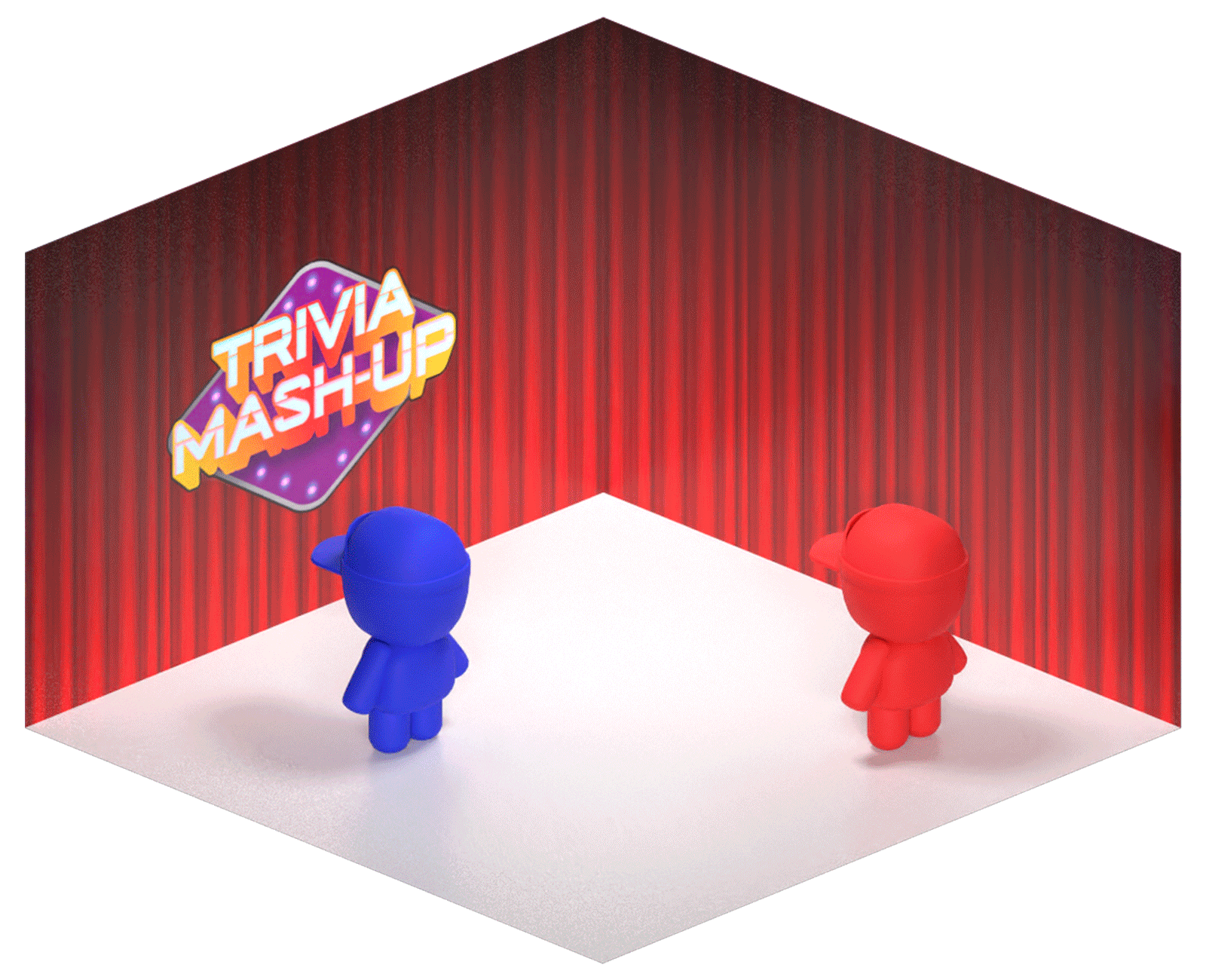
Challenge: changing landscape
Artistic, thematic and structural changes throughout development tested our Agile processes. We knew from the outset this project would take us down a variety of paths with an occasional dead end. Our client had given us creative liberty, but that didn’t mean we had carte blanche over their baby. Therefore that meant presenting ideas and receiving feedback before we began refining them.
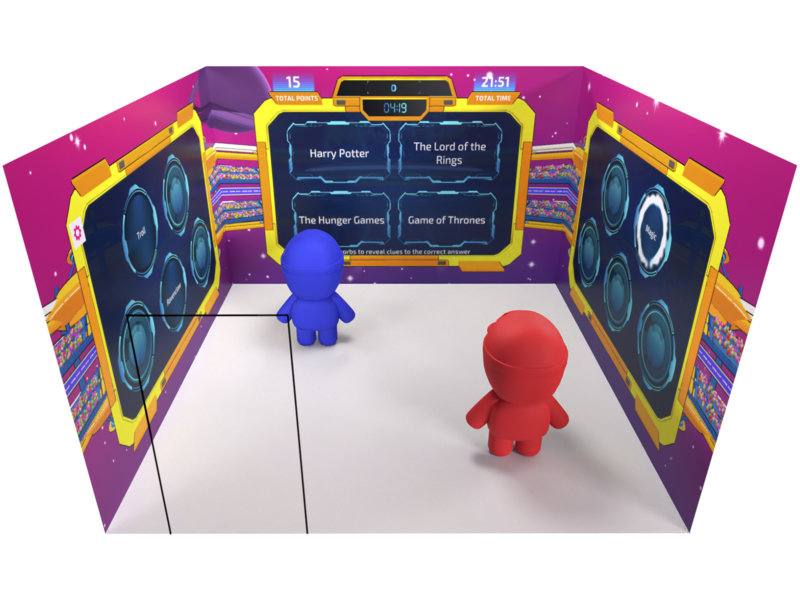
Response: adaptability
Corporation Pop is nothing if not adaptable. It’s something our clients love about us and that comes as second nature to our team. It was testament to our strong working knowledge of Agile software development that we could maintain our vision. Throughout its lifecycle, our ability to reallocate resources quickly meant we could flex the project to satisfy both our plans and the client’s brief.
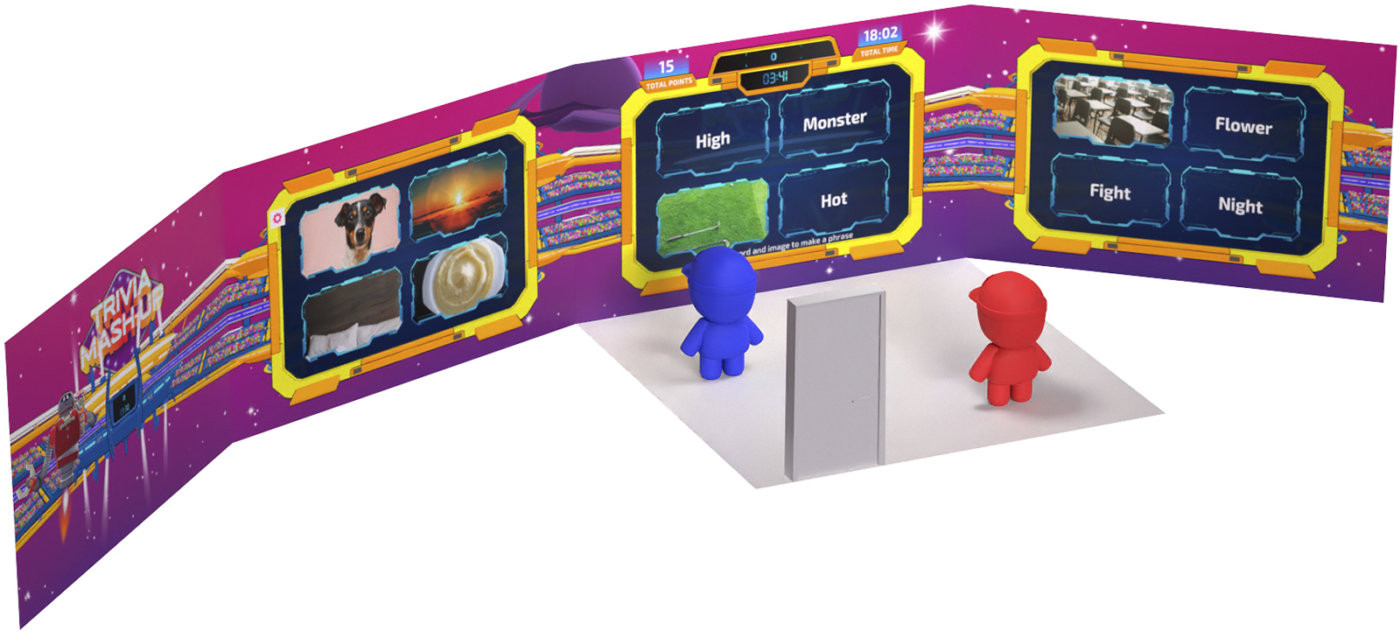
Challenge: Projection Mapping like you’ve never seen before
People usually associate projection mapping with moving images being shone onto a building. It can make walls appear to move, or look like they’re collapsing, or as if water is flooding through. Electric Gamebox projection mapping is similar, but it’s done inside the Gamebox and projected onto the four flat internal walls. However, it goes a step further as it also maps physical interaction points which become part of the game. Games require players to press the correct answer or choose settings by touching a part of the wall. This becomes more complicated because the game must identify who is touching it and, sometimes, for how long.
Response: Exemplary UI
In a setting like the Electric Gamebox, User Interface (UI) is king. It was imperative, therefore, that everything on the walls was clear, uncluttered, and large enough for players to interact with. That meant making the hit state of buttons about the size of a Coke can, so they were easy to use. When designing the brand, this kind of thing was always top of mind.
We consistently design with accessibility in mind, and Electric Gamebox was no exception. Choosing the right colour, contrast and font size was a given, but now we had physical considerations too. And so, we also kept in mind how high something was and whether it was easy to reach physically. We had to think about what it would be like to be inside a computer game at all times.
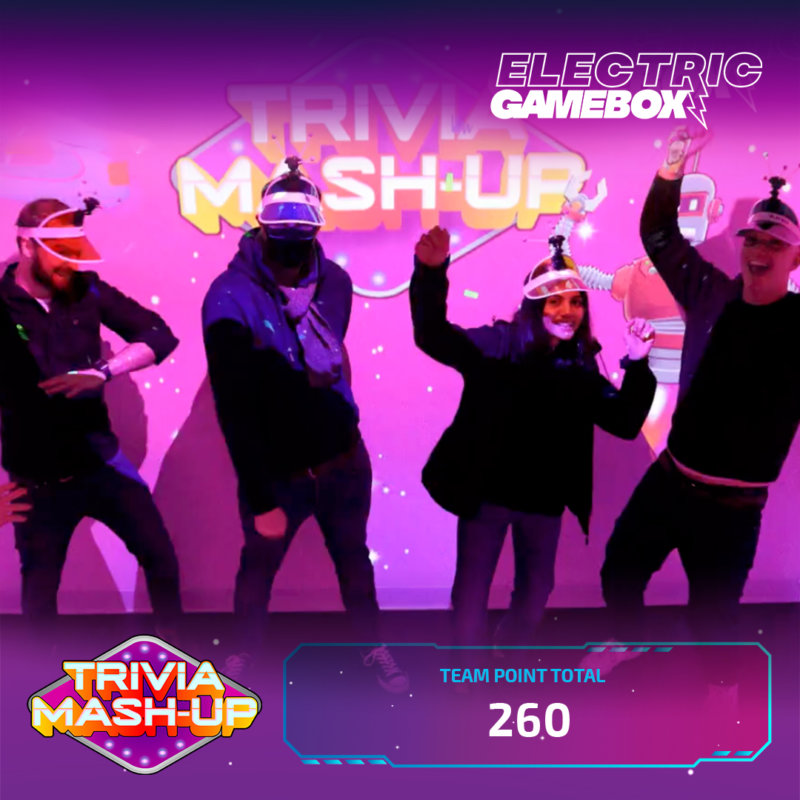
Team Pop during a test session
Outcome
Corporation Pop delivered an exceptional and immersive game show experience that’s loved by players in the UK and across America.
Extensive and successful user testing in Dallas, Texas proved the quality of Trivia Mash-up. Our game has since been installed in Gameboxes across eight states in America, with more in the pipeline. We’ve produced an outstanding gaming experience which can be updated, re-skinned and reused by our client as they see fit. In doing so, we’ve delivered a cost-effective product with an extended shelf life. Who wouldn’t want that, hey?
Key outcomes
- Design and build of an engaging and immersive gaming experience
- UI of the highest quality and broadest accessibility
- Creation of unique and inventive concept, brand and artwork
- Boundaries of existing SDK pushed to their extent and exploited fully
